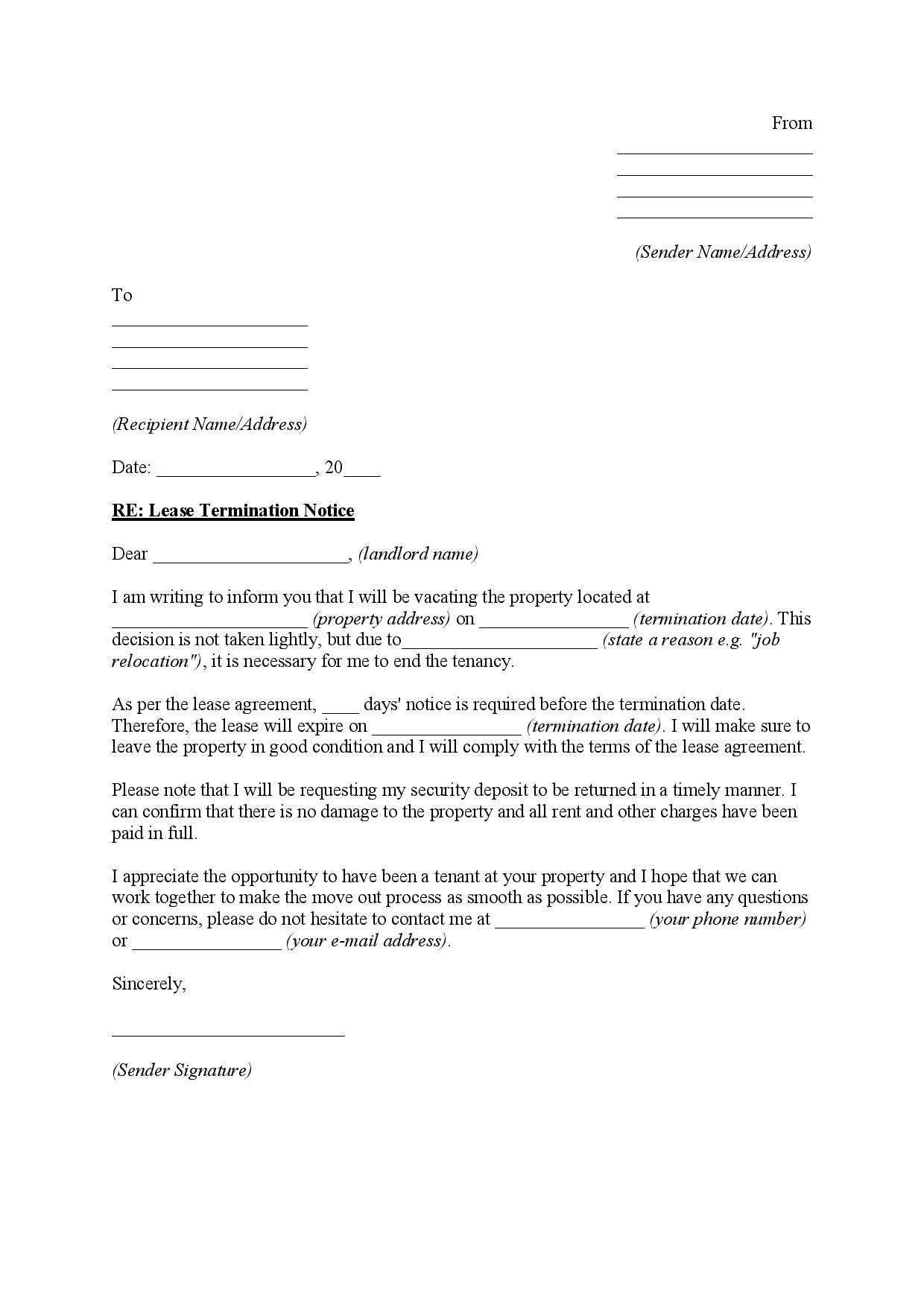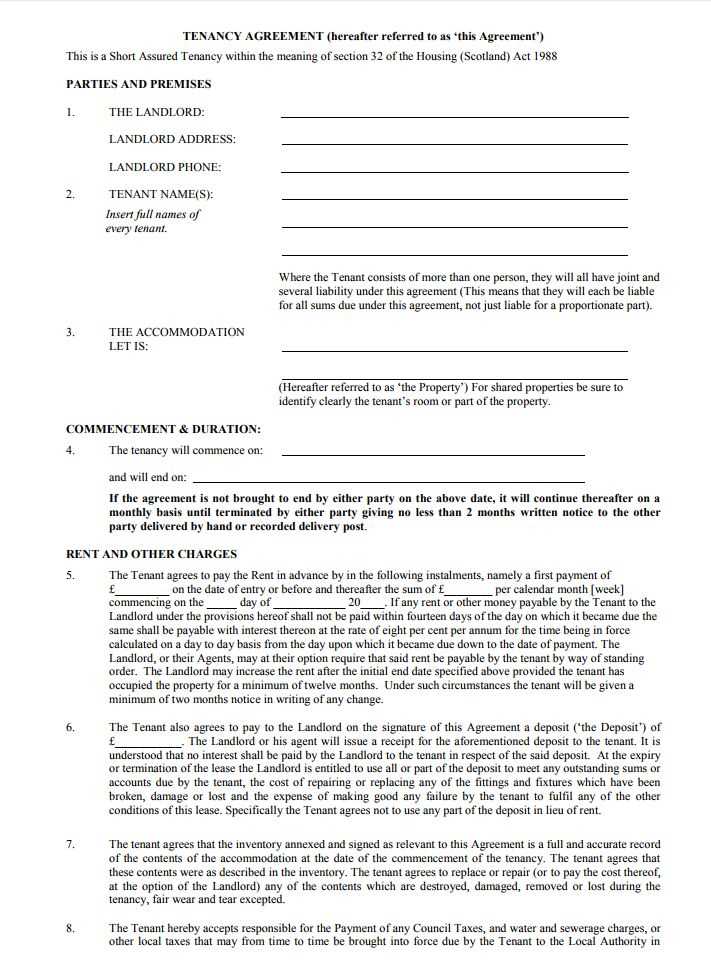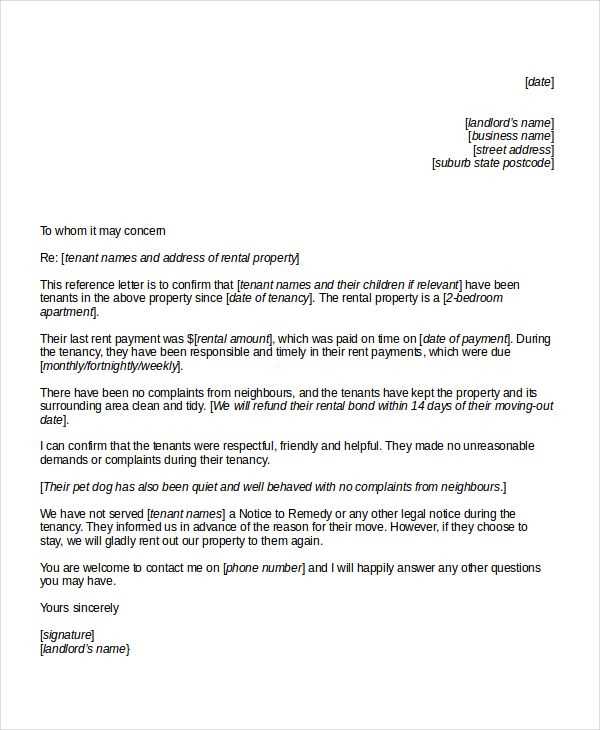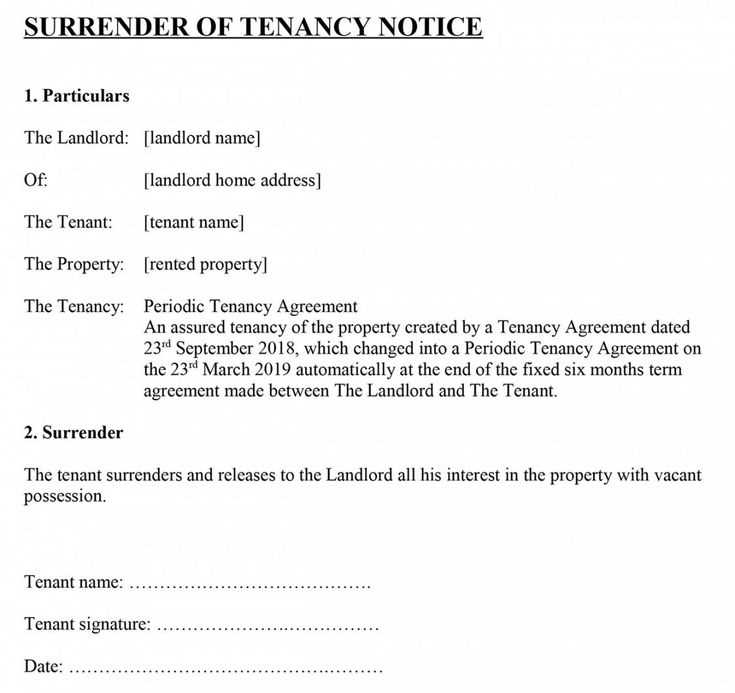End of Tenancy Letter Template for Landlords

When a rental agreement comes to an end, it’s crucial to provide a formal notification to ensure both parties are clear about their obligations. Such a document serves as a key communication tool between the property owner and the tenant, outlining the necessary steps for concluding the arrangement smoothly.
Creating a professional and legally sound message requires careful attention to detail. This ensures that the document meets all regulatory requirements while conveying the necessary information to the tenant. In this guide, we will explore how to draft an effective notification, highlighting key elements and common mistakes to avoid.
Essential Elements of a Lease Termination Notice
When informing a tenant about the conclusion of a rental agreement, it’s important to include all the necessary details that outline the next steps and expectations. A well-structured document ensures clarity and helps prevent misunderstandings. Below are the key components that should be included to make the notice effective and legally valid.
1. Contact Information
- The property owner’s full name and address.
- The tenant’s full name and the rental property address.
- The date the notice is being issued.
2. Clear Statement of Intent
- A direct declaration that the rental agreement is being terminated.
- The date the agreement will officially end.
- Explanation of any specific terms related to the termination (such as the need for repairs or cleaning).
Why a Formal Notice is Important
Providing a structured and official communication when ending a rental agreement is essential for ensuring both parties are fully informed and protected. A clear document helps avoid any legal issues and misunderstandings. By outlining the terms of departure, it establishes mutual expectations and provides a record of actions taken.
Legal Protection and Clarity
A formal notification not only provides clarity to the tenant but also ensures that the property owner is in compliance with local regulations. Failing to issue such a notice could result in unnecessary disputes, delays, or potential legal consequences.
Record of Communication

In the event of disagreements or misunderstandings, having a formal document serves as proof of the owner’s actions. It creates an official record that can be referenced in case of any future disputes.
| Benefit | Explanation |
|---|---|
| Legal Compliance | Ensures adherence to local rental laws and avoids penalties. |
| Clear Expectations | Defines responsibilities and timelines for both parties. |
| Proof of Action | Provides a documented trail of the communication process. |
How to Customize Your Notice
Adapting the document to fit specific circumstances ensures it meets both legal requirements and the needs of the situation. By personalizing the message, you ensure that all relevant details are included and communicated effectively to the recipient.
Start by addressing the recipient properly, using their full name, and specifying the rental property in question. Next, be clear about the end date and the reasons for ending the agreement, if necessary. You should also outline any instructions regarding property inspection or key handover, as these details are crucial for a smooth transition.
Lastly, make sure to include any financial considerations, such as the return of the deposit or outstanding payments. By customizing these sections, you can ensure the message is both professional and legally binding.
Legal Requirements for Ending a Lease
When concluding a rental agreement, certain legal standards must be followed to ensure the process is handled correctly. These requirements are essential to avoid disputes and to ensure that both the property owner and tenant are fully protected. Compliance with the law helps prevent any issues regarding property rights, deposits, and timelines.
Notice Period
The amount of time required for the notice to be valid varies depending on local laws and the terms of the agreement. Generally, a specific notice period must be provided in writing, and this can range from 30 days to several months.
Proper Documentation
For the notice to hold legal weight, it must contain all necessary information, including the property address, the parties involved, the effective date of termination, and any additional instructions. Failure to include these details could result in the notice being deemed invalid.
Common Mistakes to Avoid in Your Notice
Creating a clear and legally sound communication is crucial, but several common errors can undermine its effectiveness. Avoiding these mistakes helps ensure that the process goes smoothly and prevents any legal complications. Below are the most frequent mistakes to watch out for when drafting your message.
Vague Language
Using unclear or ambiguous language can lead to confusion and misunderstandings. It’s essential to be specific about the details, such as the end date, expectations for the property, and any necessary actions by the tenant. Avoid using general terms that leave room for interpretation.
Failure to Meet Legal Requirements
Not adhering to legal requirements, such as the correct notice period or proper documentation, can render the communication invalid. Always check the local laws to ensure compliance with all formalities, including the specific timeframes for providing notice.
Common Mistakes to Avoid in Your Notice
When preparing a formal notification about the termination of a rental agreement, small errors can lead to confusion or legal complications. It’s essential to ensure that all necessary details are accurately conveyed, and the format meets legal standards. Below are common mistakes to avoid to make sure your communication is effective and clear.
Incomplete or Incorrect Information

One of the most significant mistakes is failing to include key details such as the correct property address, full names of the parties involved, and the termination date. Missing or inaccurate information can render the notice ineffective and create unnecessary disputes.
Failing to Adhere to Legal Requirements

Different jurisdictions may have specific rules about the notice period or how the notice should be delivered. Not complying with these requirements could delay the process or result in legal consequences. Always check local laws to ensure you meet all the necessary criteria.
htmlEdit
Handling Disputes After the Notice is Given
Disagreements often arise after a formal notice has been provided, especially when parties involved have differing views on the terms. It is essential to address these conflicts promptly to prevent further complications and ensure a smooth transition. Clear communication and understanding are key to resolving such issues amicably.
To manage disputes effectively, both parties should carefully review the terms outlined in their agreement and consider seeking mediation or professional advice. Open and respectful discussions can often lead to an agreement that satisfies both sides, avoiding lengthy legal proceedings.
In case an agreement cannot be reached, legal routes may be considered. However, this should always be a last resort, as resolving matters through direct negotiation or mediation is generally more efficient and cost-effective for everyone involved.